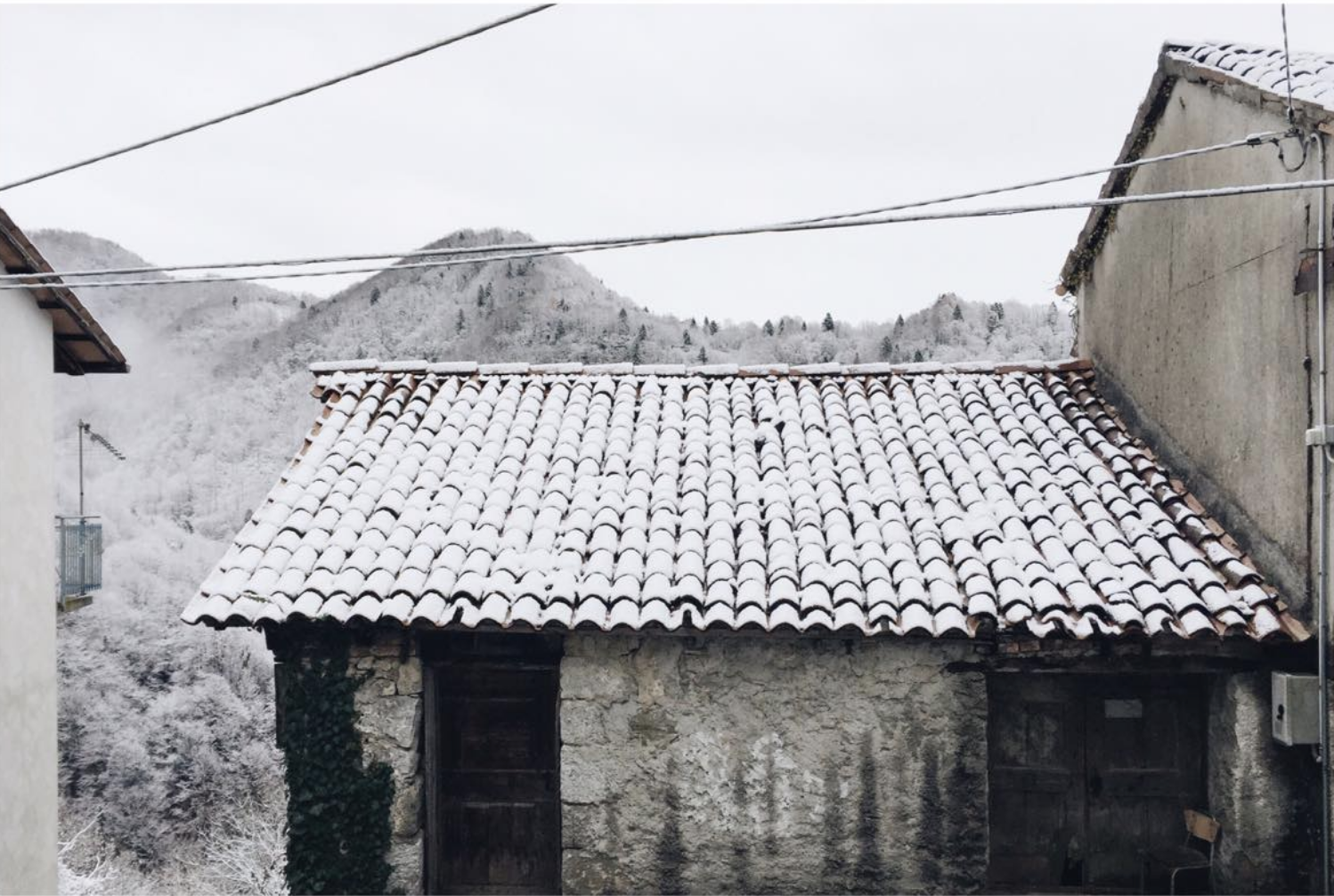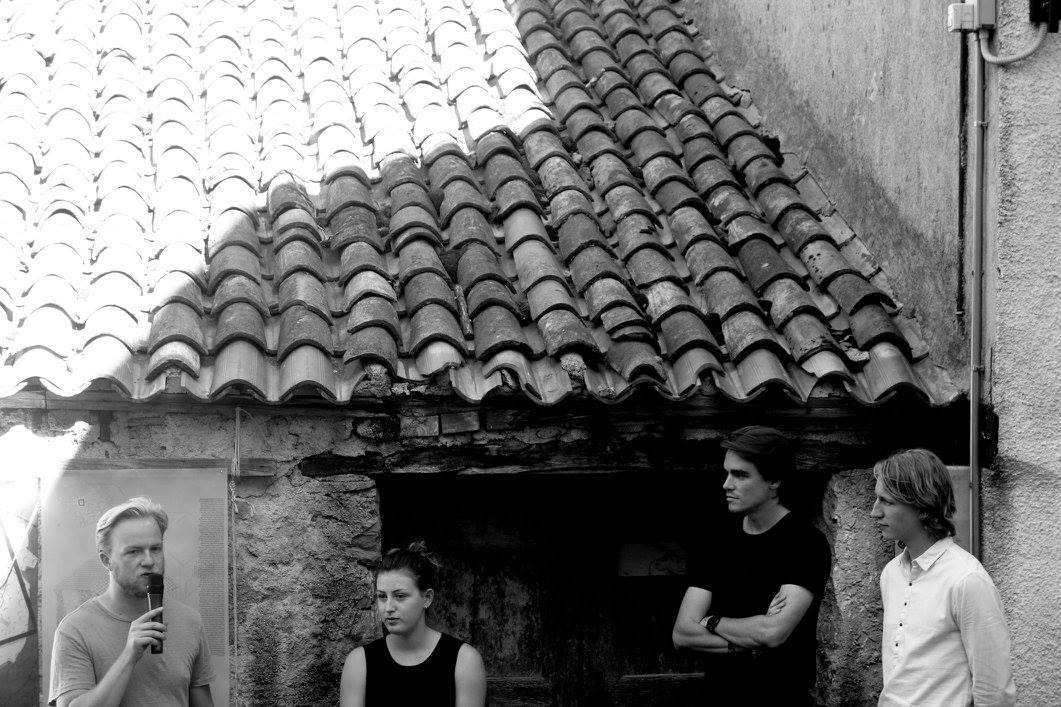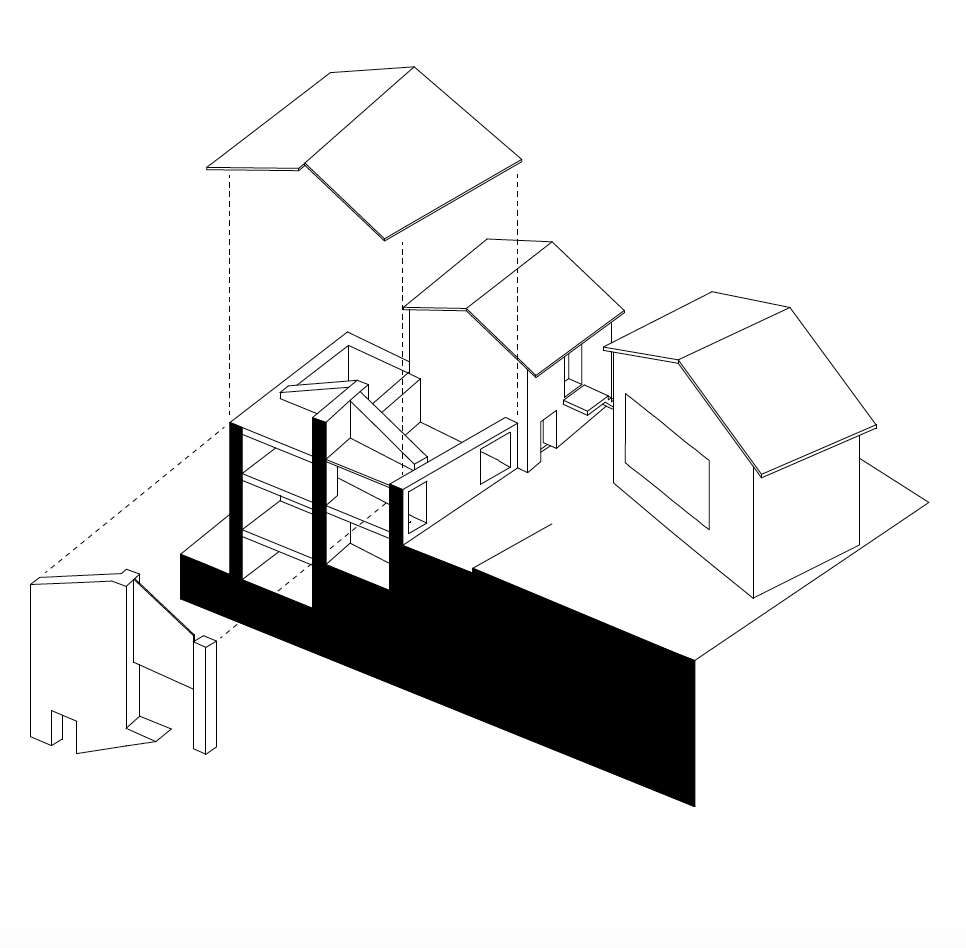The research started with the documentation of all the houses in the village. This research was presented during the art festival Stazione di Topolò in 2017
Topolò Talks
After exploring the surroundings of Topolò in the autumn of 2015 we started our conversation with the village. In the summer of 2016 this dialogue was translated into a final architectural art-piece near the Mulino in Topolò’s near surroundings. This intervention, and mostly the process towards the final gesture, made us think about the dialogue with Topolo.
As a result of the interviews and analysis we selected one house that could be tranformed
During stazione 2017 we coducted a series of interviews and conversations with artists, visitors, organisers, and any bypasser who can add to a collective idea of what Topolò can become in the near future. Parallel to conversation we made spatial analyses in the form of maps and drawings. We combined the series of interviews, conversations and drawings into a spatial, functional and ideological philosophy for Topolò in the near future. As a first gesture to implementation, our final goal for this festival is to pinpoint specific places, areas or routes, at which spatial development can take place, to achieve a future Topolò, formulated by the collective body of knowledge, of the people who make Topolò the place it is today, and will be in the years to come.
1. Aldo Rossi, The Architecture of the City, pp.130, on the collective memory; “One can say that the city itself is the collective memory of its people, and like memory it is associated with objects and places. The city is the locus of the collective memory. This relationship between the locus and the citizenry then becomes the city’s predominant image, both of architecture and of landscape, and as certain artifacts become part of its memory, new ones emerge.”
2. Georg Simmel, The Stranger in Kurt Wolff (Trans.) The Sociology of Georg Simmel. New York: Free Press, 1950, pp. 402 - 408.
One might say that Topolò, as any other place, is the embodiment of the collective memory (1) of its people. A memory that can be read like the letters or figures pressed or written on the paper of a book. Pages get torn and letters disappear through time, but get rewritten or kept by its protectors, namely the people and the fabric of Topolò itself. This does not exclude, however, the visitors, who in their own specific way contribute to the story of this village. Leaving marks of prolonged or momentary significance to the ongoing narrative. This narrative can be read like a dynamic tale imprinted in the stones, nature, senses, minds and skins of all the immaterial and material constellations involved with the ongoing narrative, within and outside the timeline of Topolò. As a visitor, one gets the opportune chance to dissolve himself in the intriguing story of Topolò, as a non-biased, curious and open-minded reader. One must be open to be lectured by Topolò’s many material and immaterial speakers, in any learned, not learned or unspoken language. The language of Topolò has a different accent for every person involved. To be a visitor, can also be interpreted as being a stranger, which can shortly be explained in the words of Georg Simmel; “in the phenomenon of the stranger, in a way which may be most briefly formulated by saying that in the relationship to him, distance means that he, who is close by, is far, and strangeness means that he, who also is far, is actually near. For, to be a stranger is naturally a very positive relation; it is a specific form of interaction.”(2) This specific form of interaction is very valuable in the recourse of a fruitful dialogue between the fabric of a place and its interpreter. In order to add something valuable, the stranger can cast his objectivity, not bound to the personal or historic fabric of the place, on to the estranged area he has stumbled upon or has been directed to. This unique position of the stranger allows him to bring his own qualities and judgements, close to his own being, and test them onto a ‘new’ area. Most important in adding something valuable to an existing environment is the dialogue with its proponents. Thus, we suggest a dialogue with the fabric of Topolò, denominated the Topolò Talks. The Talks consist out of maps and interviews, carefully analyzing the fabric of Topolò within different themes. The outcome of these talks will crystallize into a final conclusion in how and where to add or rejuvenate a valuable place or function.




